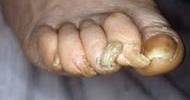An antiseptic is a substance that is applied to living tissues, such as skin or mucous membranes, to either prevent or kill microorganisms. It is an antimicrobial substance or compound that is applied to living tissue to prevent sepsis, infection, or putrefaction.
Antiseptics are distinguished from antibiotics by their ability to destroy bacteria within the body safely, and from disinfectants by their ability to destroy microorganisms found on non-living objects. To prevent infection, these are commonly used to clean wounds, cuts, and other injuries. In contrast to disinfectants, which are used on inanimate objects, antiseptics are designed specifically for use on living tissues.
Antiseptics work by either inhibiting the growth of microorganisms or killing them outright. Common antiseptic agents include:
- Alcohol (ethanol or isopropyl alcohol): These are widely used as antiseptics due to their ability to quickly kill a broad spectrum of microorganisms.
- Hydrogen Peroxide: It releases oxygen when applied to wounds, creating an environment that is inhospitable to many bacteria.
- Iodine: Iodine and iodine-containing compounds, such as povidone-iodine, are effective antiseptics with broad-spectrum activity.
- Chlorhexidine: This is often used in surgical settings and as a skin disinfectant. It has a residual effect, providing prolonged antimicrobial activity.
- Benzalkonium Chloride: This is a common antiseptic found in many over-the-counter products, such as skin wipes.
- Silver-based Antiseptics: Silver has antimicrobial properties, and silver-based compounds are used in some antiseptic formulations.
















